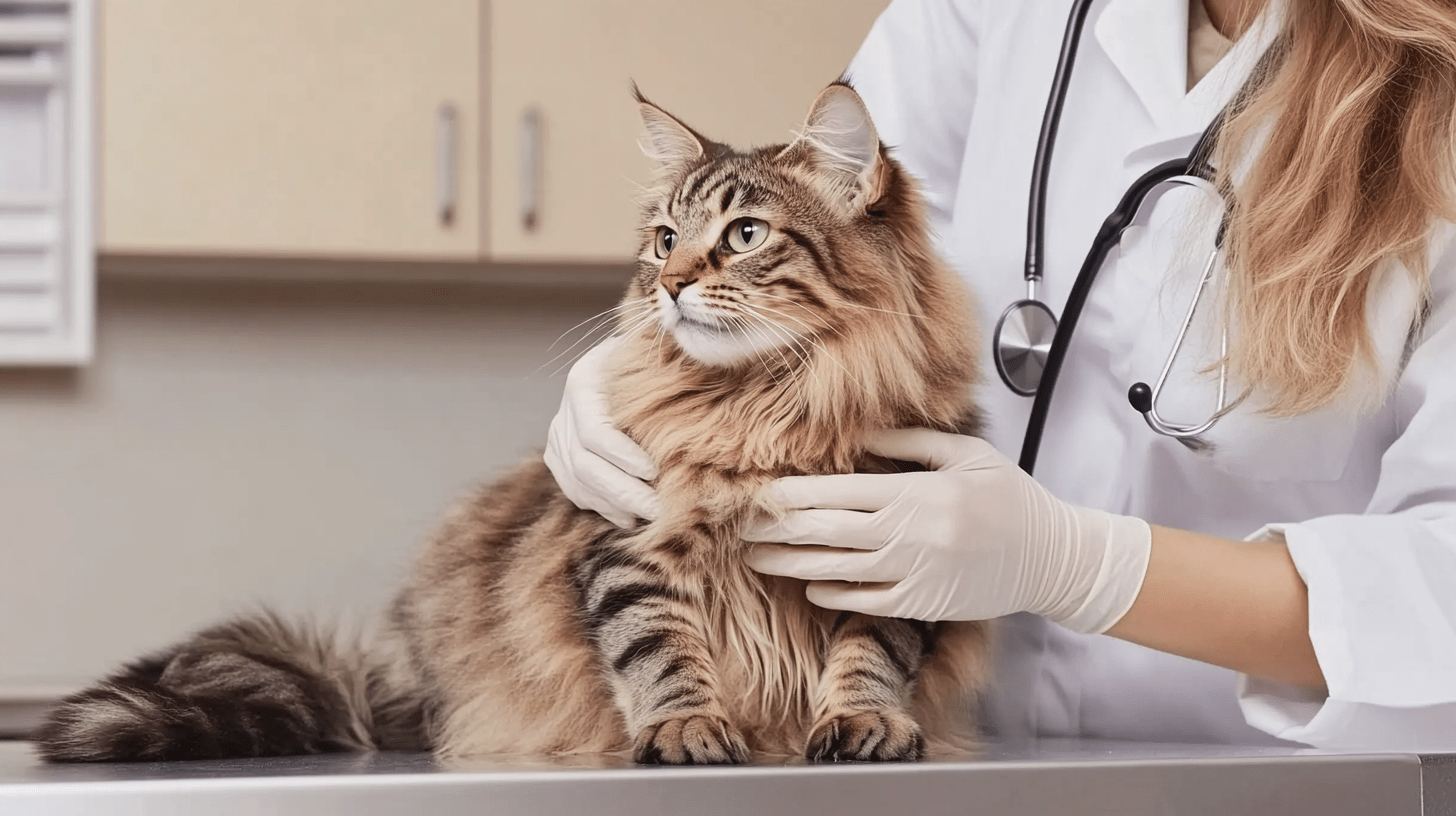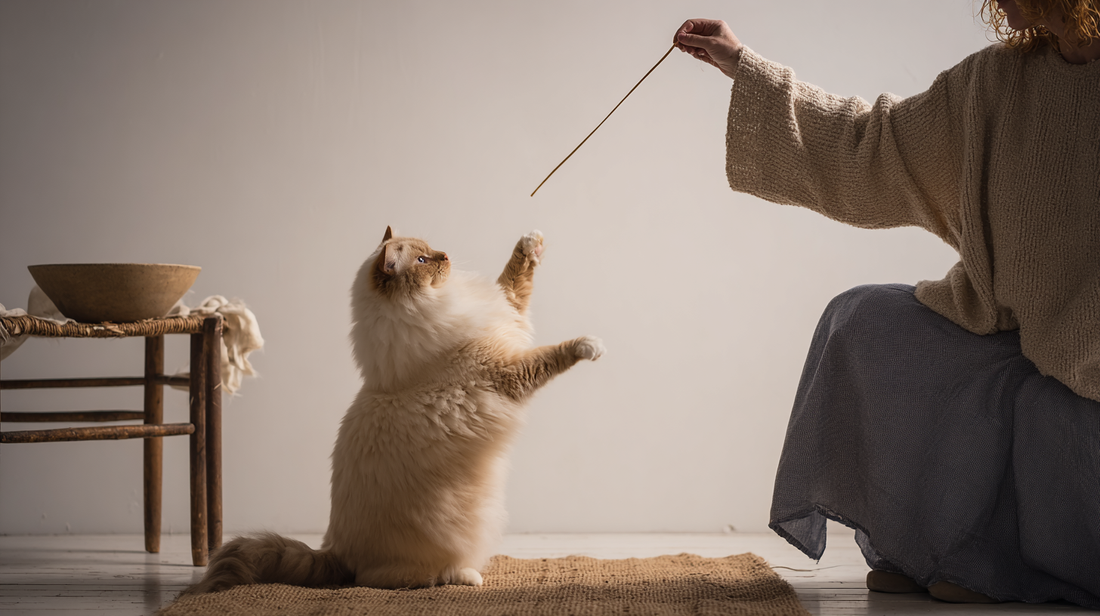Veterinary visits are a crucial aspect of ensuring the health and well-being of your feline companion. However, these visits can often become a source of considerable stress for both you and your cat. Many cats display clear signs of fear when visiting the veterinarian.
By recognizing how stress can impact your cat—even to the point of distorting physiological measurements—this guide aims to provide you with practical strategies to minimize your cat's anxiety and create a more positive experience for everyone involved.
Summary
The science of feline stress: Why cats fear the vet
Environmental triggers: what overwhelms our cat
Veterinary environments contain numerous potential stressors for your cat. The unfamiliar surroundings, the presence of unknown people and other animals, and the cacophony of unfamiliar smells and noises can all trigger anxiety. Disinfectants and the sounds of barking dogs commonly found in veterinary clinics, can be particularly alarming for your feline friend.
Cats thrive on predictability and control, yet the veterinary setting often deprives them of both. Even smooth or slippery surfaces may contribute to your cat's unease within the clinic.
Behavioral and physical responses to veterinary stress
Stress manifests in various ways, impacting both your cat's behavior and physiology. Behavioral changes may include aggression, defensiveness, and attempts to hide. Your cat may become less cooperative, making examinations difficult and potentially risky for the veterinary team. Physiological impacts can range from increased respiratory rate and sweaty paws to dilated pupils.
Furthermore, experiencing high levels of stress during veterinary visits can lead to long-term fear and avoidance, making future care more challenging. Many owners report that they would consult the veterinarian more often if the visit was not associated with so much stress for their pet.
*It is important to understand that fearful and anxious pets present potential safety concerns for veterinary staff. Research has shown that nearly 33% of dogs display aggressive behaviors, and up to 10% of these dogs exhibit severe aggression.

Setting the stage for success at home
The key to reducing stress during veterinary visits often lies in preparation that begins at home.
Creating positive carrier experiences
The carrier should be more than just a means of transport; it should become a safe and familiar space for your cat. Leave the carrier out in a common area of your home with the door open and comfortable bedding inside.
Use positive reinforcement, such as placing treats and toys inside, to encourage your cat to enter the carrier voluntarily. Your goal is to create a positive association with the carrier, so your cat views it as a secure retreat rather than a source of stress.
Reducing travel anxiety through gradual exposure
Desensitize your cat to car travel by taking short, positive trips. Begin with simply sitting in the car with your cat in the carrier, then progress to short drives around the block. Ensure the ride is comfortable and secure, with the carrier stabilized to minimize motion.
The destination should always be a pleasant one, such as returning home, to reinforce a positive experience. Animals unfamiliar with car travel tend to show increased signs of fear, anxiety and stress at the clinic.
Medication and supplements: professional options for anxiety relief
Discuss calming aids with your veterinarian. Options like α-s1 casozepin may help reduce stress by having a small impact on the autonomic nervous system of cats. In a study α-s1 casozepin was used for the treatment of cats with anxiety disorders over a period of eight weeks. Cats here were evaluated three times using the cat emotional scale. Treated cats showed a significant improvement in their relationship with familiar and unfamiliar people, albeit with unchanged fear reactions.
Pre-visit medication to ease anxiety should be considered, especially for cats with a history of extreme stress or aggression at the vet. Medications, such as gels, can easily be administered with food, particularly for preventive checkups or vaccinations where fasting isn't required.
However, it is crucial to have a pre-visit discussion with your veterinarian to determine the most appropriate medication and application method, considering your cat's tolerance to handling around its head.

At the clinic: Managing your cat's experience during the visit
Waiting room strategies for minimizing anxiety
Examination room techniques for reduced stress
Allow your cat to exit the carrier on their own terms. Avoid forcing them out, as this can significantly increase their anxiety. Offer high-value treats and favorite toys to distract and reassure your cat throughout the examination.
Maintain a calm and confident demeanor yourself, as cats are highly sensitive to their owners' emotions.
Gentle handling approaches for veterinary procedures
Encourage the veterinary team to use gentle and minimal restraint with your cat. The team should adjust their approach based on your cat's body language, pausing when necessary to avoid escalating stress.
Distractions, such as treats or gentle petting, can be effectively used during injections or other minor procedures to minimize perceived pain.

Building a pet-centered veterinary partnership
Communicating your Cat's individual needs and fears
Inform the veterinarian and staff about your cat's specific anxieties and triggers. This valuable information allows them to tailor their approach to better accommodate your cat's individual needs.
Benefits of no-procedure familiarization visits
Training techniques to reduce fear of medical procedures
Work with your vet to gradually expose your cat to feared stimuli, such as the examination table or medical instruments, while simultaneously creating positive associations with treats and praise.
This process, known as desensitization and counterconditioning, can help change your cat's emotional response to these triggers over time.
Post-visit care: Supporting your cat's recovery
Safe transport for a comfortable return journey
Maintain a calm and quiet environment during the car ride home. Drive carefully to prevent motion sickness and further stress for your already taxed companion.

Creating a calm recovery environment
Provide a safe and comfortable space for your cat to relax upon returning home. This could be a favorite bed or a quiet room where they can decompress after their ordeal.
Monitor interactions with other pets carefully, and reintroduce them gradually to avoid any additional stress.
Monitoring for continued stress symptoms
Be alert for any behavioral changes that may indicate lingering stress, such as decreased appetite, increased hiding, or aggression towards other pets. Consult your veterinarian promptly if you have any concerns about your cat's post-visit behavior.
Creating a lifetime of positive veterinary experiences
Minimizing stress during veterinary visits is vital for your cat's well-being and long-term health. A stress-free veterinary visit benefits all involved parties—your cat, you as the owner, as well as the veterinary team.
By working closely with your veterinarian to develop a personalized plan and implementing the strategies outlined in this guide, you can transform veterinary visits from a source of anxiety into a more positive experience for both you and your feline companion.
The information in this article is based on the following scientific publications:
Calder, C.D. and Wright, S.C. (2025). Veterinary Guide to Preventing Behavior Problems in Dogs and Cats, First Edition. John Wiley & Sons, Inc.
Makawey, E.I., Iben, C. and Palme, R. (2020). Cats at the Vet: The Effect of Alpha-s1 Casozepin. Animals, 10(11), 2047.
Mariti, C., Guerrini, F., Vallini, V., Bowen, J., Fatjò, J., Diverio, S., Sighieri, C., Gazzano, A. (2017). The perception of cat stress by Italian owners. Journal of Veterinary Behavior.
Stella, J. (2013). Effects of stressors on the behavior and physiology of domestic cats. Applied Animal Behaviour Science, 143(2-4), 157–163.
Unknown, (2021). A Review on Mitigating Fear and Aggression in Dogs and Cats (2). MDPI.
Looking for a solution? Start here
Stylla Calmness for cats
Supports relaxation and emotional balance with amino acid-based formulation
- Promotes emotional balance and relaxation
- Helps maintain balanced behaviour
- Supports healthy physiological equilibrium
Made in Switzerland with strict quality standards





